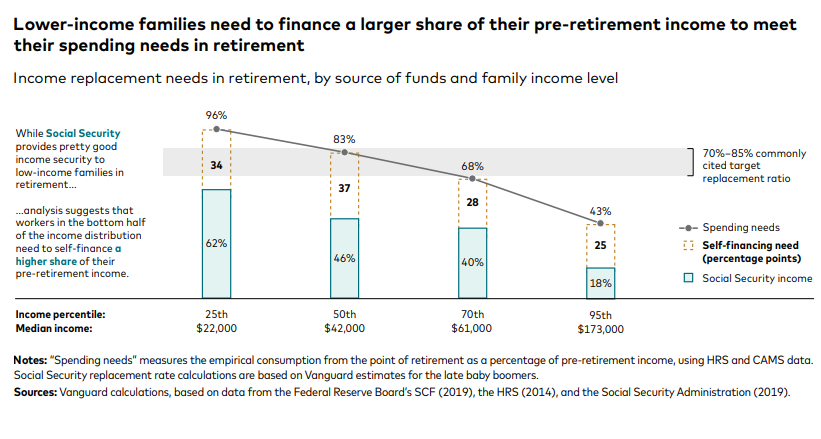Unleashing the Power of Choice: Break Free from the Profit-Driven Healthcare System and Pay Less for Better Healthcare

In a healthcare landscape driven by corporate profits, it can be daunting to work out how to reclaim control of our healthcare spending and therefore financial security.
By unraveling the traditional healthcare plan into separate components and going direct to providers, we can unlock substantial cost savings. However, the ultimate key to reducing expenses lies in prioritizing our health and nutrition, as staying healthy (prevention) is the most effective way to avoid healthcare costs.
Nourish to Thrive: The Foundation of Health
The most potent cost-saving measure lies within our daily choices. Our bodies are intricately connected to the food we consume. We literally "are what we eat". Each day over time, our body gradually replaces every cell, replacing the old ones with new, made from the foods we eat.
Opting for natural, whole foods, especially those high in lean proteins, healthy fats, fiber, food sourced vitamins and minerals, provide essential building blocks for our cells and the nutrients which optimize cellular function and overall well-being. By understanding that the three most prevalent and expensive conditions: diabetes, heart disease and dementia are all nutritionally based, we can empower ourselves to make conscious choices and maintain good health, thereby preventing these diseases.
As a previous professional athlete, food and nutrition are a passion of mine and I can write endlessly on the topic. If you would like more articles about how what you eat impacts your health, intelligence and mental wellness, just let me know 😊
Unmasking the Profit-Driven Healthcare System
Being born in Australia I was brought up with an undying belief in a “fair go all round”. This means that everyone should be treated fairly, and “some” should not prioritize excessive profit over doing the right thing by people. Sadly, what I see is that traditional healthcare and insurance "systems" here in the US do prioritize corporate profits over patient well-being in many cases (don't get me started on the processed food industry which absolutely contributes to the problem). I thus feel driven to shed light on unfair practices and highlight other options or choices that can both improve your outcomes and save you money.
Hidden within the traditional healthcare and insurance system are exorbitant markups and a continuous (premeditated) reliance on medications. By taking preventative action through nutrition, then making more informed choices or breaking down our healthcare plans into separate components we can bypass the profit-driven machine, go direct to healthcare providers and take charge of our healthcare decisions.
Here are some options for you to consider:
Cooperative Health Care Insurance: Empowering Members, Reducing Costs
Cooperative health care insurance programs put the power back in the hands of individuals. By managing the program collectively, members choose and pay their healthcare providers and for prescriptions at cash pay prices, leading to significantly reduced bills. This alternative empowers us to demand transparency and affordability, cutting out excessive markups that fuel corporate profits. Depending on the program and region, members can potentially save 20-40% or more on monthly insurance premiums while having much greater freedom of care than through traditional health insurance plans and often without deductibles or copays. Established as non-profit organizations, CEOs are rewarded based on health outcomes and member satisfaction measures not corporate profit.
Cooperative healthcare plans aren't only for individuals and families, as an evolution of corporate self-insurance, these types of plans help companies save significant money compared to traditional employee benefit plans while still outsourcing the plan management. These types of plans are also available for small employers looking to improve employee retention and productivity rates. Research shows that employer provided healthcare makes employees happy and happy employers are more productive and stay longer.
Another option is to break down insurance into the various components and services based on your health and what you need based on your stage of life:
1. Managed Healthcare Services: A Modern Approach
A relatively new option to consider are managed healthcare services like Forward. These innovative healthcare providers offer a comprehensive approach to primary care, focusing on preventive measures and leveraging advanced technologies.
Members receive personalized care plans, comprehensive health assessments, and access to cutting-edge diagnostics. By emphasizing proactive health management, these services aim to prevent illnesses before they escalate, reducing the need for costly treatments.
Managed healthcare services not only prioritize affordability but also empower individuals to take control of their health through data-driven insights and personalized care. Forward costs just $149 per month and includes all your primary and preventative care needs without any copay or deductibles required. Certain specialties are included too.
2. Embrace the Power of Telemedicine: Convenient and Cost-Effective Health Care
Telemedicine offers quality care without the burden of high costs. By opting for virtual consultations, we can access healthcare professionals from the comfort of our homes, saving both time and money. Telemedicine eliminates geographical constraints and reduces travel costs.
Telemedicine services can be purchased on an as needs basis or via monthly subscription and can cover primary and urgent care right up to specialist services. There are now hundreds or providers of telemedicine services in the US. Depending on the services included, subscription plans range from $20 to $100 per month.
3. Catastrophic Health Insurance: Safeguarding Against the Unexpected
Catastrophic health insurance focuses on major events, offering financial protection without exorbitant premiums. The cost of catastrophic health insurance can vary depending on factors such as age, location, and coverage limits. Premiums can range from $50 to $300 per month, making it an affordable alternative to comprehensive coverage.
Catastrophic Health Insurance is commonly used in combination with managed or telemedicine primary care services or with self insurance to cover large or unexpected healthcare costs.
4. Comprehensive or Illness Specific Life Insurance
Comprehensive life insurance plans can provide coverage for chronic, critical, and terminal illnesses, offering financial support during difficult times. Chronic illness coverage provides a monthly benefit vs critical or terminal illness benefits which are paid as lump sum payments. These insurance benefits can be can be used to pay for treatment, replace income, pay off debts or even take a round-the-world trip if that’s your fancy. The premiums for these policies depend on your age and health when you first start the plan.
If you are looking for a less expensive option or you have family risk factors there are plans specifically designed to cover certain conditions like cancer, heart disease and stroke. By covering just that one condition (or group of conditions) you are lowering the risk for the insurance company who can provide you a much less expensive option.
There are also specific insurance plans for long term care costs. Hospice care facilities run between $8,000 to $15,000 per month depending on whether you want a private room or need dedicated care. The Administration of Aging estimates that over 70% of 65 year olds are expected to need long term care, making buying long term care insurance almost a necessity. The rate of both physical and cognitive care increases as we age.
5. Self-Insurance: Empowering Yourself with Financial Flexibility
For those seeking even greater control over their healthcare expenses, who are in good health and who look after themselves nutritionally, self-insurance is an option worth considering. This option also works well in combination with some of the other options mentioned.
By setting aside funds in a Health Savings Account (HSA), cash value life insurance policy (with chronic, critical and terminal illness benefits), or even in an after-tax savings account; individuals can accumulate funds specifically designated for health-related expenses. HSAs offer tax advantages, allowing contributions to be made on a pre-tax basis, and withdrawals can be tax-free when used for qualified medical expenses. Cash value life insurance is funded with after tax dollars (if self-funded; businesses can claim these as tax deductions if established correctly as part of employee benefits packages), but the money paid out for healthcare costs is tax free. Additionally, any after tax expenditure on healthcare costs over 10% of taxable income is tax deductible.
This strategy allows you to take charge of your healthcare costs, providing the ability to negotiate cash pay discounts directly without limit to network. Self-insurance, combined with preventative nutrition (and potentially some of the other options provided too) offers another alternative path towards cost-effective healthcare and greater financial security.
6. Prescription Discount Cards
Prescription discount cards such as QuilityRx go direct to drug manufacturers to negotiate best pricing on behalf of their members who then can search and compare prices pharmacy by pharmacy online. The good cards such as QuilityRx are not only free of charge, but will guarantee their negotiated pricing from any pharmacy trying to price gouge and charge higher prices. It's amazing how many drugs are significantly cheaper using the RX card cash pay price than many insurance copays. Free prescription discount cards are a great companion to all the alternative health insurance options listed above.
Benefits for Businesses: Saving Money and Promoting Wellness
The alternative healthcare funding options discussed in this article are not limited to individuals. Businesses can also benefit from significant cost savings and improved employee wellness.
For businesses who do not currently provide insurance or healthcare benefits to their employees, the adoption of any of the above strategies (which can be implemented in tax advantaged ways for the employer) will improve employee morale, productivity and retention.
Please note that even very small businesses and the self employed can implement these strategies through their corporate structure for a tax advantaged approach.
For businesses who already provide health insurance or healthcare benefits, switching some or all of their programs to these strategies can significantly reduce overall costs as well as improve health outcomes. And yes, costs of insurance do vary based on the health of your employee population, but it is absolutely possible to move your healthier employees to cooperative or managed healthcare plans leaving the remaining employees in their traditional plan. Your healthy employees will thank you for providing them with a more preventative proactive approach under which they are rewarded for their good health by removal of deductibles, copays and network requirements and your business will save significant dollars at the same time. Additionally, implementing wellness programs that focus on nutrition, exercise, and stress management can enhance overall employee health, reduce healthcare expenses and improve employee morale, productivity and retention in the long run.
Learn More
If you are an individual, business owner, or benefits manager interested in no cost review of your healthcare cost and insurance profile to see if there are better options available for you (which can provide you better coverage and better health outcomes for lower cost), reach out for a no obligation conversation. I am here to help.






